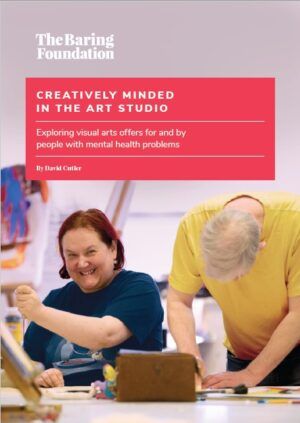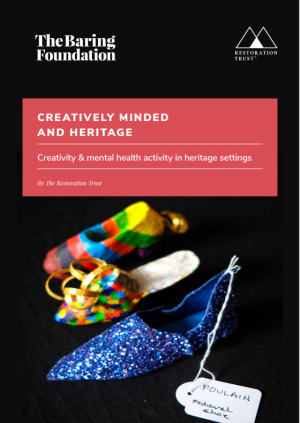We all know a brisk 10,000 steps a day is good for your physical and mental health. We also know that arts and creativity have many benefits for people living with mental health problems.
So, doing both together – creative activity and walking – should be a winning combination… This blog highlights a few projects we know about which are doing just that.
There’s nothing new about combining walking with creating. Walking arts is an artistic discipline or tradition in its own right, traceable back to the Dadaists in the 1920s, and some would say back further to the Romantic poets in the European context and even the ancient Greeks. There is even a Walking Artists Network established by artist and academic at the University of East London, Clare Qualmann, which brings together artists who integrate walking into their artistic practice.
Clare, who also very kindly told me about her work (on a walk of course!) works with The Line, a public art trail and arts organisation in the London borough of Newham, East London, which as well as being open to all, runs regular walks for people facing various challenges including mental health problems, referred through local social prescribing networks.
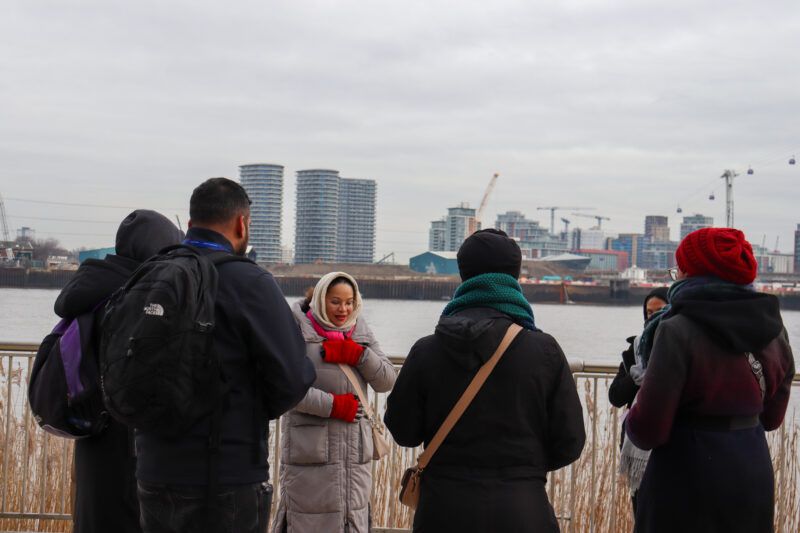
I was lucky enough to join their weekly Thursday morning wellbeing walk in July and enjoyed a walk along the River Lea, a pit-stop to read and discuss a poem (appropriately by German Romantic poet, Rainer Maria Rilke) and a sociable chat in a café afterwards. The Line’s first piloted social prescribed wellbeing walks as a response to Covid in 2021. Their guided walks for small groups take a gentle pace and are led by participant needs. They offer participants an opportunity to experience art outside traditional gallery settings while connecting with others and exploring nature in one of the most densely populated and least green areas of the country.
The Line have recently also started a walk for new mothers and mothers-to-be to connect with each other through nature-based walks along a section of The Line.
“I like the variety each week of people coming along. The conversation of what’s around, noticing things overlooked on previous weeks, or noticing something new. The friendly, all included, atmosphere.”
A participant on The Line
You can read more about The Line in our most recent Creatively Minded report, Creatively Minded in the Art Studio.
The visual arts (sketching, painting, photography, crafting with found / natural materials) lend themselves particularly well to creative walking.
Photo walks are often a part of the therapeutic photography offered by the wonderful Belfast Exposed, for example.
This summer we also had the pleasure of visiting the Royal Albert Memorial Museum (RAMM) in Exeter, which last year ran a very inspiring outdoor photography project called Dartmoor Frame of Mind for young people on the CAMHS waiting lists. The participants initially joined online sessions to learn about digital photography and then met up to join local photographic artist, Jo Bradford, to go on photo walks across Dartmoor. The project concluded with an exhibition of their work at RAMM.
You can read more about this project and watch a short film about it here.
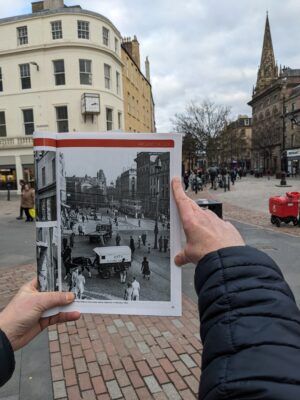
Hundreds of miles away in Dundee, Art Angel – supported by the Foundation’s Creatively Minded Men funding – have integrated walking into their creative group for men. Walks of different lengths, but no longer than three miles, have been part of the project – from the more familiar urban environments of Dundee city to the forest trails of Tentsmuir.
Project coordinator, Guen Rota, says that the act of walking is an important part of the creative experience:
“The act of walking in a group certainly adds an important element to the process of trust and a sense of belonging to something that is not formed yet, and the magic was seeing this project growing and taking shape thanks to their openness and curiosity.
Another key aspect was moving away from the familiar safe haven of Art Angel and venturing, together, into the unknown. Tentsmuir Forest was the furthest point of all, reached with the help of a minivan. Each participant demonstrated a touching trust in the group, stepping out of their comfort zone on every journey, short or long, far or near. In those spaces, where everything was new, their creativity took hold, and with it, I hope, a new confidence.”
Artwork produced by this Art Angel group will be displayed on billboards in Dundee – and thereby in a nice circular way forming part of the daily walks of many other Dundee residents.
Well-City Salisbury, the very impressive and long-running city-wide social prescribing programme, has also running several creative courses out into the local countryside, again with a focus on visual arts. Last summer’s Wild Wanders was a partnership with Wiltshire Wildlife Trust and artist James Aldridge. Participants embarked on a series of mini journeys through the natural landscape and worked with found objects to create their own individual art works. Participants were picked up at a central point to enable access. This summer, Well-City also ran Sketching in the Landscape, led by Art Care with a local artist, Nick Andrews, involving gentle strolls and exploring different sketching techniques and materials.
“Really helped me appreciate being out in nature. This is really helping with my wellbeing and having the best mentors.”
Wild Wanders participant, 2024
Well-City walks tend to be 1-2 hours long, with plenty of breaks and cups of tea.
The Sheffield Environmental Movement, famous for the Black Men Walking group which was turned into a successful theatre production, runs ad-hoc outdoor arts courses, including photography, aimed at people from racialised communities in recognition of the disproportionate access to the countryside.
What about other art forms? Music can also take place on the move (think of the marching band tradition!). It seems to be less common in creative mental health but, also funded under our Creatively Minded Men programme, the amazing Infant Hercules men’s choir in Stockton-on-Tees has been out singing on stretches of the Cleveland Way, a long-distance trail from Helmsley on the North York Moors over to Whitby on the coast.
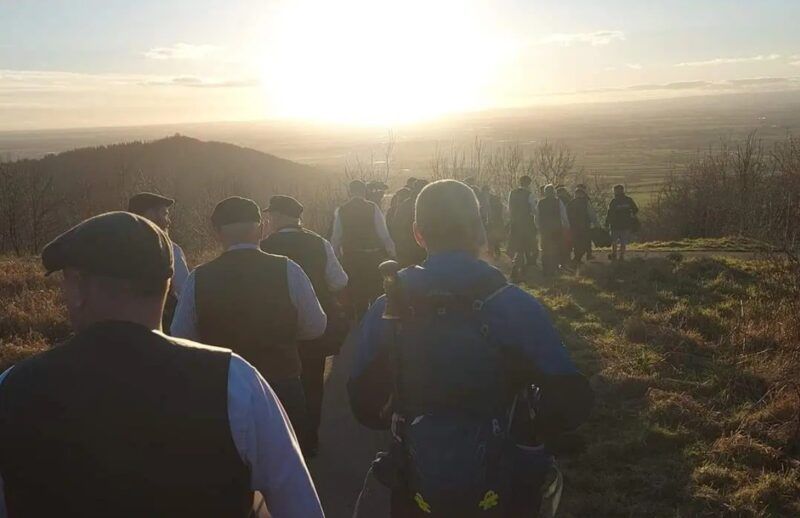
And the People’s Orchestra which started in West Bromwich, but now has branches in many parts of the country, has run a People’s Walking Choir aiming to support physical health and mental wellbeing.
A few thoughts to conclude:
- Are there other public art or sculpture trails working with people with mental health problems like The Line? If not, could there be?
- It would be great to see and hear more about the use of other art forms, including music, and how about performance?
- And finally, people from racialised communities can feel less like they belong or are welcome in the countryside. There are a number of new walking groups springing up to address this, but we haven’t found any specifically creative or targeted at people living with mental health problems. An opportunity for creative mental health?
